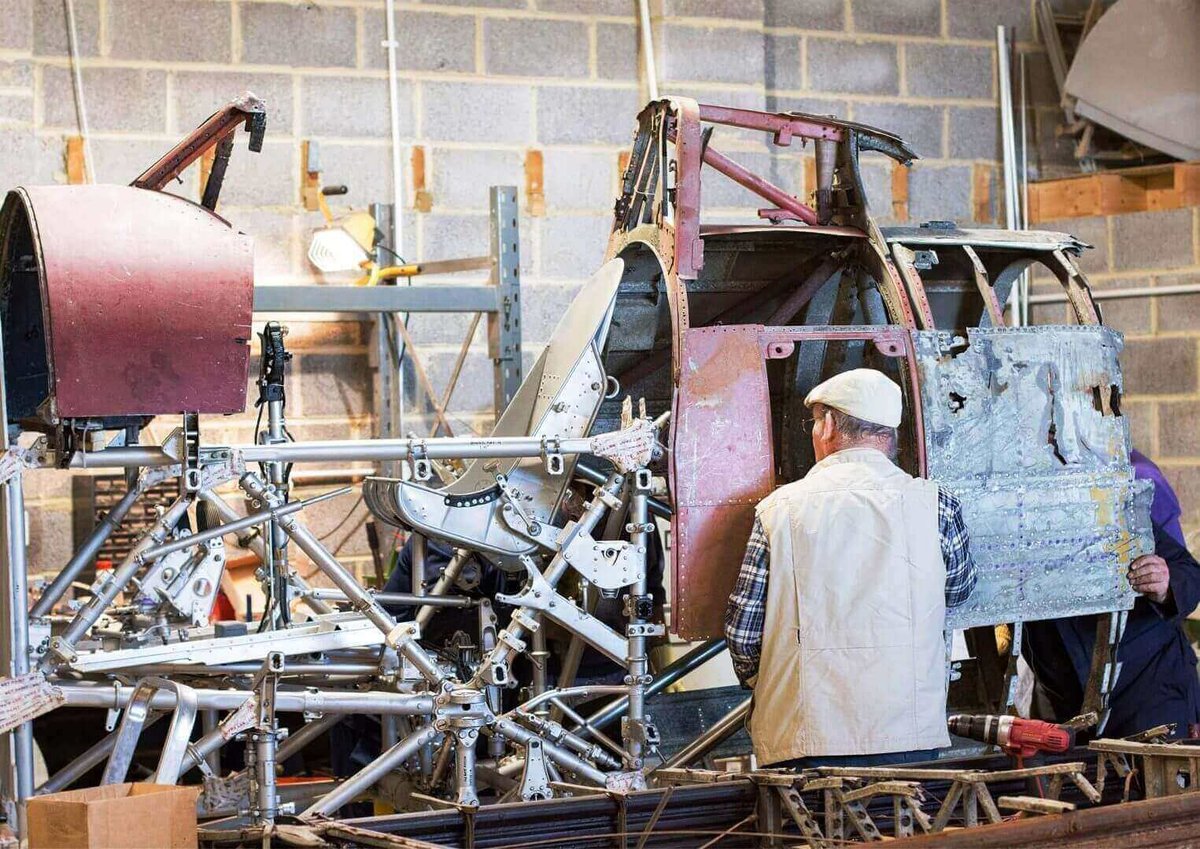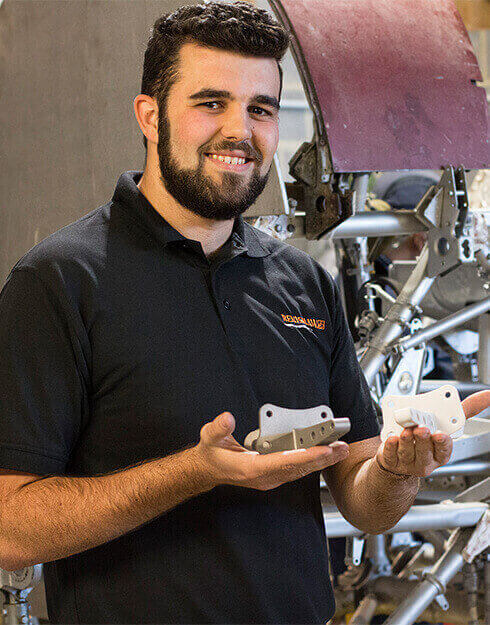Renishaw engineers use the AM250 3D printer to restore 1938 Hawker Typhoon aircraft for the Jet Age Museum in Gloucester, UK.
Although 3D printing technology is oftentimes praised as a technology of the future, it’s also extremely useful when it comes to restoring pieces of our past. This is particularly true for worn out aircrafts and automobiles, most of which are no longer in production and lack accessibility to replacement parts.
The UK-based engineering technologies company Renishaw recently collaborated with the Jet Age Museum in Gloucester to help restore cockpit brackets for a Hawker Typhoon aircraft.
The museum had rescued an almost complete cockpit from rare British single-seat fighter-bomber from a junkyard back in 1998, and have been working on the restoration project ever since.
When it came time to recreate the aircraft’s four cockpit brackets, the Renishaw engineering team used original drawings from 1938 to design each one from scratch via CAD software.
After prototyping the brackets in plastic polycarbonate, they used the Renishaw AM250 additive manufacturing machine to produce the final parts in aluminum alloy material. The AM250 is a multi-material capable metal 3D printing system with a build volume of 250 mm x 250 mm x 300mm.

No Working Hawker Typhoon Aircraft in Existence
Joshua Whitmore, Development Technician at Renishaw, explains:
“Reconstructing the brackets with traditional manufacturing technologies such as CNC machining was not feasible, so we suggested using additive manufacturing. The design flexibility of additive manufacturing allowed us to create and produce the cockpit brackets quickly and efficiently. It was inspiring to see the latest additive manufacturing technology being used to recreate a part of history.”
The restoration project was particularly praiseworthy due to the fact that there are currently no working Hawker Typhoon aircrafts in existence, and even complete models are an extreme rarity nowadays.
With only the original aircraft drawings available as a starting point, the Renishaw engineering team impressively managed to recreate the parts from scratch and produce them via metal 3D printing.
According to Trevor Davies, the Typhoon Sponsor Coordinator for the Jet Age Museum, restoring the authentic cockpit brackets would not have been possible without the additive manufacturing capabilities of Renishaw and their expert engineering team.
Since the completion of the restoration project, the museum has approached Renishaw about the possibility of restoring the Hawker’s Napier Sabre piston engine in the near future.
Source: Renishaw

License: The text of "Hawker Typhoon Restored with 3D Printed Cockpit Brackets" by All3DP is licensed under a Creative Commons Attribution 4.0 International License.